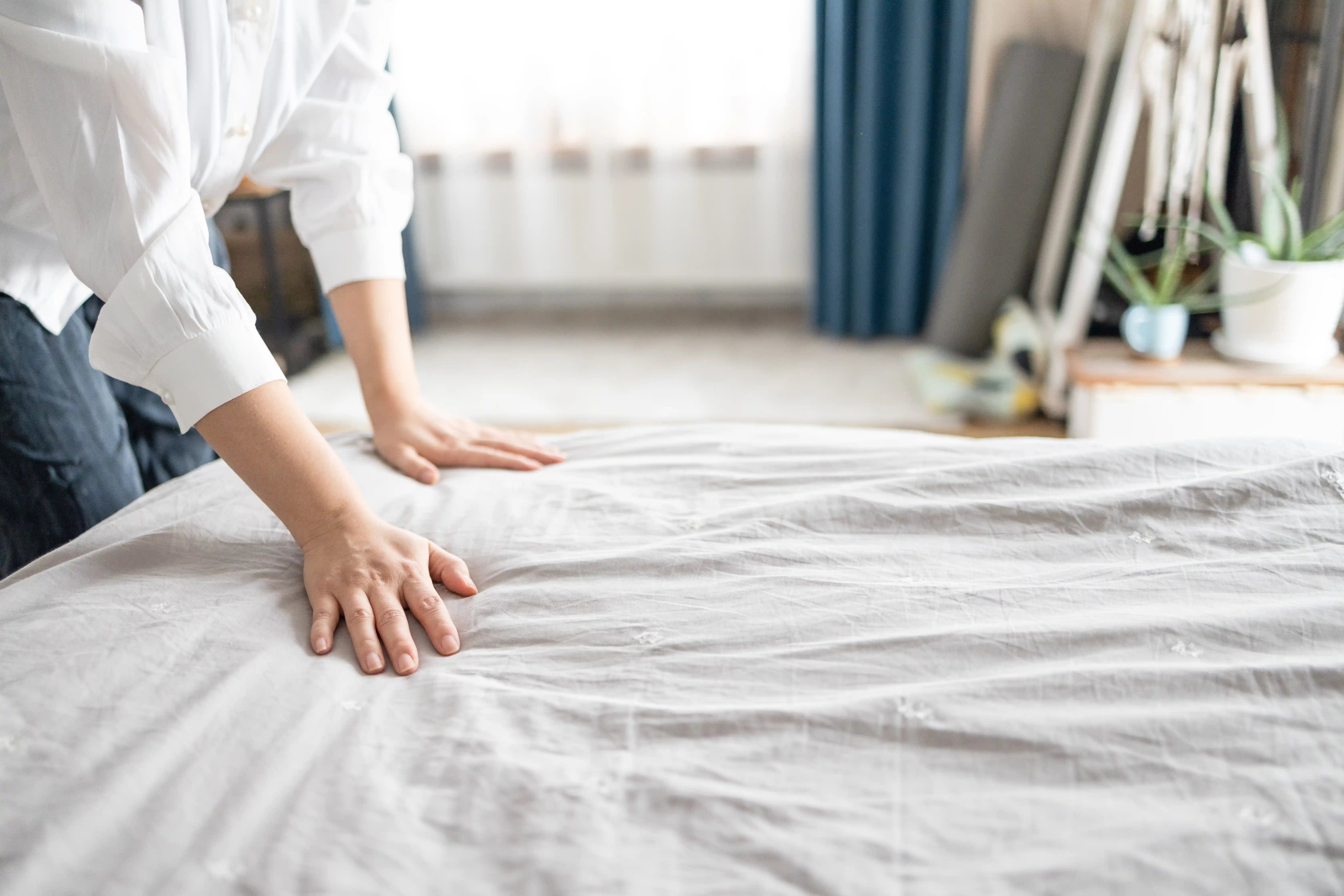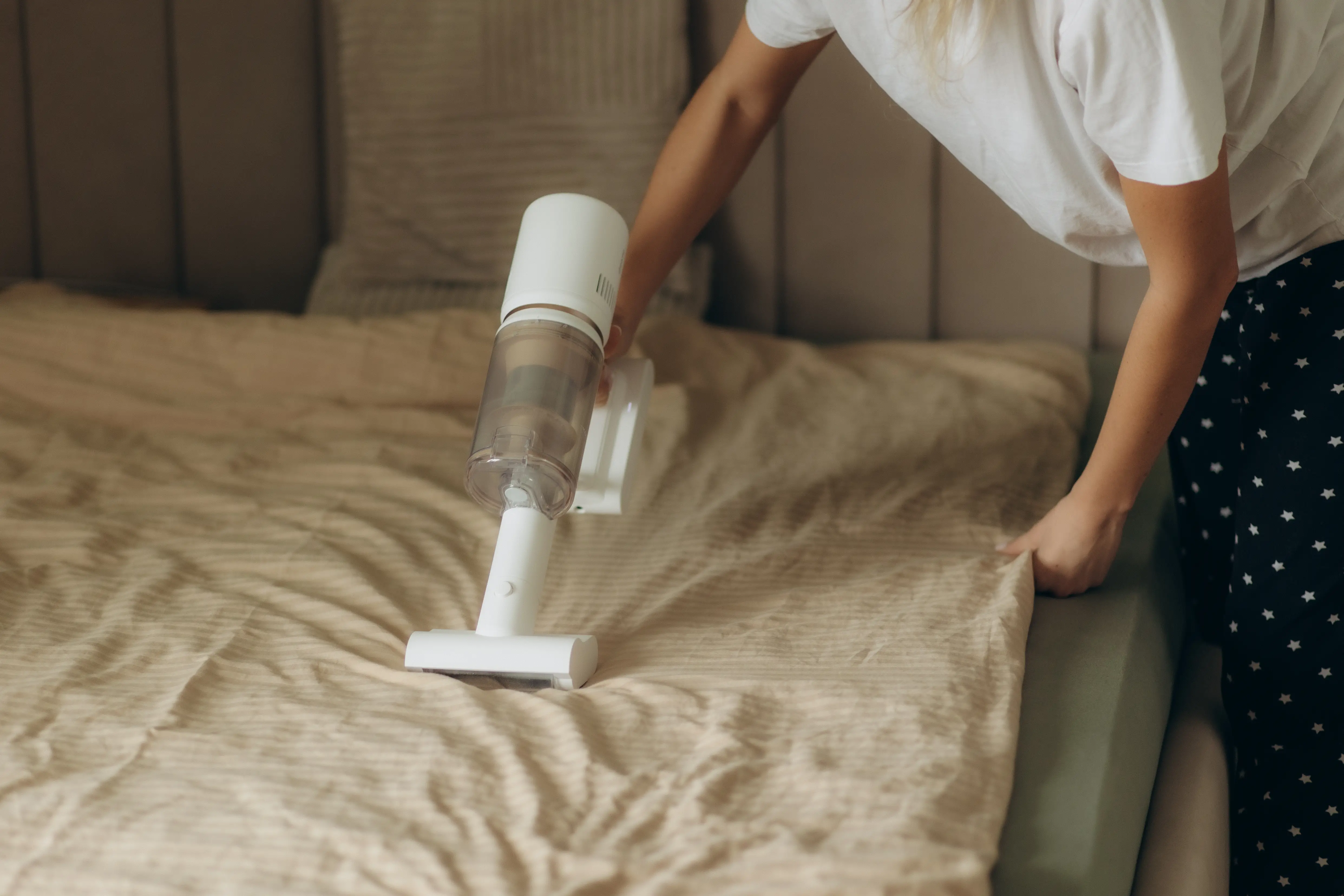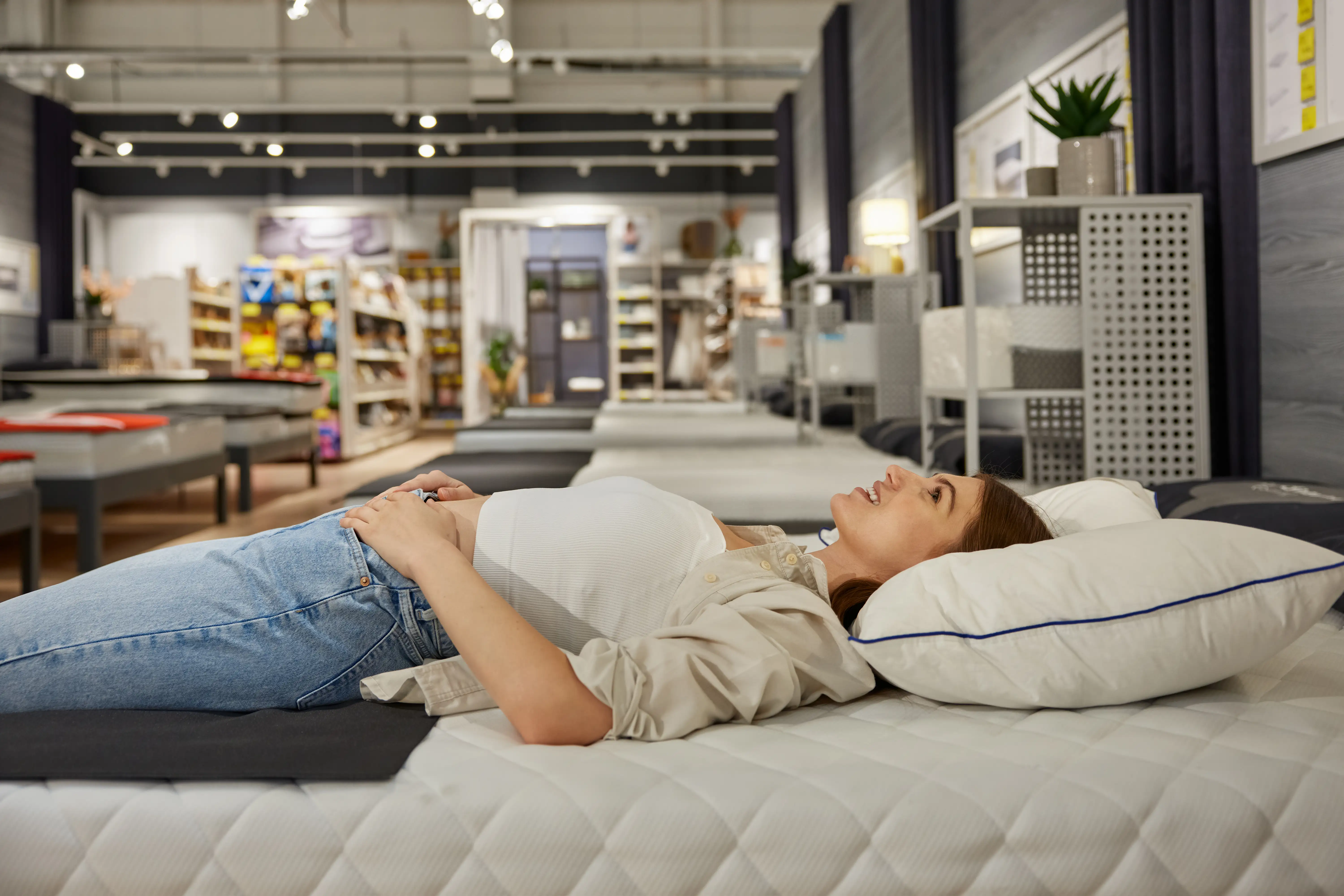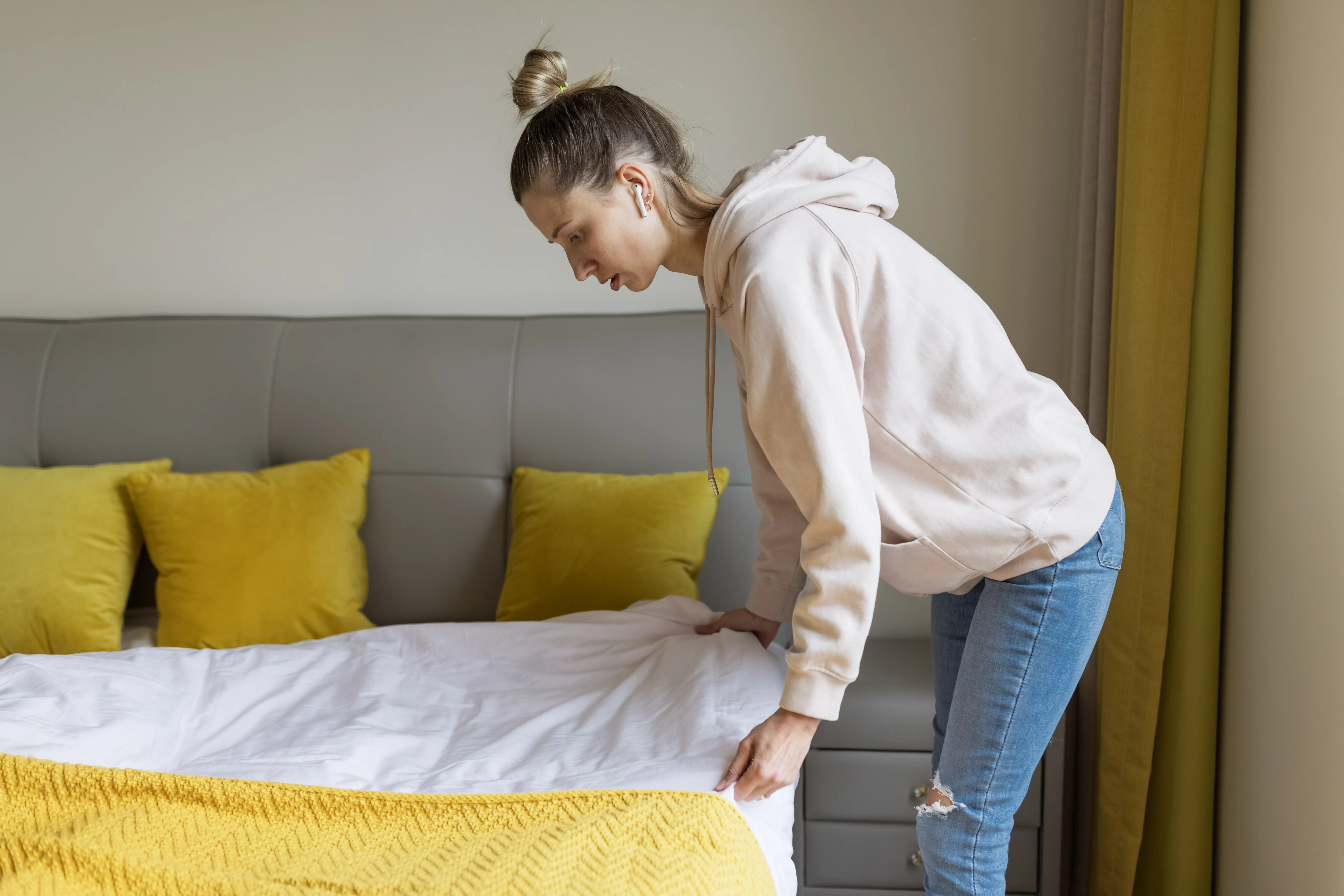Accidents are an unavoidable part of life. Whether a child wets the bed or a pet has an unexpected mishap, these situations can result in urine ending up on your mattress. When that happens, it is essential to respond quickly. Unlike sheets or blankets, mattresses are not made to be easily cleaned. Liquids can penetrate the deeper layers in a very short time, leaving unpleasant odors and difficult stains.
This article discusses a simple, step-by-step process of cleaning a mattress. It covers both fresh accidents and older, set-in stains. It provides you with helpful information on the cleaning supplies that you will need, effective techniques for eliminating odors, and preventive tips so that you can help safeguard your mattress in the future. By following these instructions, you can restore your mattress and keep your sleeping area cleaner and healthier.
Why It is Important to Act Quickly on Stains

Urine stains are more than just surface-level messes; they are time-sensitive and become harder to treat the longer they are left alone. Acting fast is not just helpful; it is essential. Because mattresses are thick and made to absorb, even a short delay allows the liquid to seep deeper, making both the stain and odor more difficult to remove.
Urine Can Soak Deep Into Layers
Urine does not stay on the surface. It will move very quickly through the mattress to the lower layers within a short time. After that happens, it becomes much harder to get out the stain and odor, and can even lead to ongoing hygiene concerns.
- Harder to Remove Once Dry: As urine dries, it leaves uric acid crystals and other waste products on mattress fibers. Once these residues have hardened, regular surface cleaning is not adequate to break them down, and it is therefore much harder to completely remove them.
- Increases Chances of Odor and Bacteria Growth: A damp mattress creates the perfect conditions for bacteria, and in some cases, mold, to thrive. If moisture becomes trapped in the layers, especially in humid climates, this can lead to unpleasant odors, the appearance of mold, and increased exposure to allergens over time.
- Reaches Inner Foam and Fabric: Most foam mattresses are constructed using absorbent materials such as memory foam, polyfoam, or latex. These materials can easily absorb liquid. Within minutes, urine can move far beyond the outer cover and settle deep inside the mattress layers.
Lingering Odor Can Affect Sleep
Even when a stain fades visually, the smell may remain. If the urine was not fully cleaned or the mattress was not fully dried, the smell will persist and spread in the room. This not only damages your mattress, but it also disrupts your overall sleeping environment.
- Persistent Ammonia Smell: Urine contains ammonia, which produces a strong and unpleasant chemical scent. That odor can become attached to fabric or foam for extended periods if absorbed by them. Every time you move or when you get into bed, the odor can be rereleased into the air.
- Disrupts Relaxation and Sleep Quality: A persistent smell makes it harder to relax. Strong smells disrupt the body's process of relaxing and sleeping, especially for individuals who are sensitive to smells or those with allergies. Sleep becomes restless or disturbed as a result.
- Embarrassment and Discomfort: Whether it occurs on your bed or a mattress used by guests, urine odor can make the space feel less clean and inviting. This may cause discomfort or embarrassment, particularly when sharing a bed or hosting others in your home.
What You'll Need: Essential Cleaning Supplies

Before beginning the cleaning process, it is important to gather the proper supplies. The materials you use may vary depending on whether the stain is fresh or has already dried, but having the right tools nearby will make the job more efficient and help ensure a thorough result.
For Fresh Stains
When cleaning a fresh urine stain, timing is critical. Cleaning it right away prevents it from soaking into the mattress and becoming a long-term issue. These items are recommended for immediate response:
- Absorbent, Clean Towels or Paper Towels: Blot the liquid with them. Do not rub, as this will only push the urine further into the
- Spray Bottle: Helps to spread the cleaning liquids uniformly over the stained area.
- Distilled White Vinegar: Disinfects naturally, breaks down urine chemicals, and helps neutralize odors.
- Cold Water: Dilutes cleaners and cleans the area without setting stains.
- Laundry Detergent or Dish Soap: Effective at breaking down proteins found in urine and removing stains.
- Baking Soda: Pulls the moisture and the smell from the surface of the mattress.
- Vacuum Cleaner (using the upholstery attachment): Used to remove the dried baking soda and any other remaining debris when the area dries.
For the Vinegar Solution Method
The vinegar method works for fresh stains and slightly dry stains. This is what you will need for this process:
- Distilled White Vinegar: Breaks down the ammonia in urine and removes its strong odor.
- Cold Water: To dilute the vinegar and make it mattress-material safe.
- Laundry Detergent: Increases the cleaning ability of the vinegar.
- Spray Bottle: To combine and apply the solution evenly.
- Baking Soda: Sprinkled onto the area to take up remaining moisture and odor.
- Clean Cloths or Towels: Applied to blot up excess liquid and dry the treated area.
- Vacuum Cleaner (with upholstery attachment): Removes dried baking soda and any loosened particles after treatment.
For the Hydrogen Peroxide Method
More resistant or older stains may require stronger urine stain removal techniques using a concentrated solution. The hydrogen peroxide method is effective in such cases. Make sure to have the following materials prepared:
- 3% Hydrogen Peroxide: Serves as a mild bleach that is capable of lifting deeply set stains.
- Baking Soda: Used in combination with hydrogen peroxide to eliminate odor and aid in stain removal.
- Liquid Dish Soap or Laundry Detergent: Provides cleaning power as it dissolves the proteins in the urine.
- Spray Bottle: Convenient for mixing and spraying the solution directly on the stain.
- Clean Cloths or Towels: Ideal for drying and blotting after treatment.
- Vacuum Cleaner (with upholstery attachment): Removes dried baking soda and any residual particles.
Important Note: Hydrogen peroxide can whiten or bleach some fabrics. Test it on a small, hidden area of your mattress before applying it to the whole stain.
Removing Fresh Urine from Your Mattress
Treating urine right when it occurs greatly enhances mattress cleaning success and helps eliminate both the stain and urine smell. Prompt action also restricts the degree to which the liquid can soak into the mattress layers, making cleanup much more effective.
The following steps are tailored specifically for fresh incidents.
Step 1 - Remove the Bedding
Remove bedding immediately to prevent further spread of the moisture.
- Remove all sheets, blankets, and mattress protectors as soon as possible.
- Urine can pass through multiple layers of bedding quickly, so any bedding that comes into contact with the affected area must be washed.
- Wash the bedding in hot water and laundry detergent.
- Add one cup of white vinegar to the rinse water to help neutralize odor.
Step 2 - Blot the Stain
Attempt to remove as much liquid as you can when it is on the surface.
- Blot urine using a clean cloth or several layers of paper towels.
- Apply light, firm pressure rather than rubbing because that will force the urine deeper into the mattress.
- Blot repeatedly until there is no longer any moisture moved onto the cloth or towels.
Step 3 - Apply Cleaning Solution
Treat the chemical compounds of urine with a vinegar solution.
- Mix equal parts of cold water and distilled white vinegar in a spray bottle.
- Spray the solution freely over the stained area so it penetrates to the same depth as the urine.
- Let the solution stay for 10 to 15 minutes so it can settle and break down uric acid as well as neutralize ammonia.
- Blot the area again with a dry, clean towel after soaking to absorb excess water.
Step 4 - Sprinkle Baking Soda
This step helps in eliminating moisture and odor.
- Apply an even layer of baking soda throughout the moist area.
- Baking soda naturally can absorb moisture and odors from the treatment.
- Let the powder sit undisturbed for a minimum of 8 hours, or overnight, if possible, for maximum effect.
Step 5 - Vacuum the Residue
Finish by removing the dried baking soda and any remaining particles.
- Once the baking soda is completely dry, vacuum the area thoroughly using an upholstery or handheld vacuum.
- Ensure all powder is removed to prevent it from attracting moisture or dust.
- If staining persists after cleaning, consider repeating the process for a more thorough result.
- If traces of staining persist, it may be necessary to repeat the process for a more thorough result.
Dealing with Stubborn or Set-In Stains
Once urine has dried, it is far harder to clean. Odor and color tend to set into the fabric, and surface cleaning will often not be enough.
Dried urine leaves uric acid crystals that bind very well to mattress fibers, so deeper, more targeted cleaning techniques are needed. The following two methods are among the best for treating older or set-in stains.
Vinegar Solution
This method is effective for stains that have dried but not been treated. Vinegar helps loosen dried compounds and reduce odors.
- Step 1 - Mix the Cleaning Solution: In a spray bottle, combine an equal volume of cold water and distilled white vinegar. One to two tablespoons of laundry detergent may be added for increased cleaning potential. Carefully stir the solution to avoid excessive foaming.
- Step 2 - Soak the Stained Area: Spray the solution liberally over the stain. The area needs to be damp enough so that the mixture will seep as far in as the urine did originally. Don't soak the mattress, but have the solution fully absorbed into the stained area.
- Step 3 - Air Dry the Mattress: Allow the mattress to air dry in a well-ventilated place. Depending on airflow and moisture, it might take a few hours. Opening a window or using a fan will help speed things up.
- Step 4 - Repeat If Needed: If the smell or stain still exists once the mattress is dry, repeat the process. Deep stains may need several treatments before they break down totally.
- Step 5 - Rinse and Blot the Surface: Once the stain has significantly gone away, blot with a damp cloth and plain water. This takes out any residual vinegar and detergent and reduces any remaining odor.
Hydrogen Peroxide
For tougher, set-in stains, hydrogen peroxide offers a stronger cleaning option. It works well on older discoloration and odor, but because it has mild bleaching effects, it should be used with caution; always test on a small hidden area first.
- Step 1 - Prepare the Cleaning Solution: Mix 1 cup (8 oz) of 3% hydrogen peroxide and 3 tablespoons of baking soda in a spray bottle. Add a few drops of liquid dish soap or laundry detergent. Mix the ingredients slowly to avoid producing too much foam.
- Step 2 - Apply the Solution to the Stain: Spray the stained area gently until it is damp. Do not soak the mattress, as too much water can become trapped inside and grow mold or mildew.
- Step 3 - Let the Area Dry Naturally: Allow the treated area to air dry thoroughly. As it dries, baking soda will leave a white residue on the surface, removing the stain as it absorbs lingering odors.
- Step 4 - Vacuum the Residue Thoroughly: Once the surface is completely dry, vacuum the area with an upholstery attachment. Be certain to clean off all of the baking soda residue so that it does not attract dust or moisture.
- Step 5 - Reassess and Repeat If Needed: After vacuuming, inspect the mattress for any lingering signs of staining or odor. If the issue still exists, redo the whole process until the area is completely cleaned and fresh.
Eliminating Lingering Odors
Even after a urine stain looks clean, odor could remain, especially if the urine soaked deep into the mattress or dried before cleaning. At this point, standard cleaning steps are not always enough.
The methods below are designed to deal with odors that continue to surface even after stains have been treated. Each one helps absorb, neutralize, or break down the smell at its source.
Baking Soda Paste Method
Use this method if the initial cleaning did not totally get rid of the odor. Baking soda and vinegar form a reacting paste that infiltrates foam and fabric to target the source of the odor.
- Step 1 - Mix the Paste Over a Sink: Mix equal amounts of baking soda and distilled white vinegar in a large bowl. It will foam right away. It is better to mix it over a sink so that spilling can be prevented. Mix until it is a spreadable paste consistency.
- Step 2 - Apply the Paste: Spread a thick coat of the paste using a clean cloth or a soft-bristled brush over the smelly surface. Gently work the mixture into the fabric in a way that will enable it to penetrate deeper odor-causing particles in the mattress.
- Step 3 - Allow the Paste to Fully Dry: Allow the paste to air dry for several hours. Dry time will depend on humidity and how wet the area was in the first place. Make sure it is dry before moving on to the next step.
- Step 4 - Vacuum Up the Dried Paste: Once the paste is dry and hard, vacuum the area thoroughly with a handheld or an upholstery vacuum and get rid of all of the dried material without making a mess.
- Step 5 - Recheck and Repeat If Needed: Let the mattress air out. Check the area again to see if the smell is still there. If it is, repeat the process. The baking soda paste can be reused multiple times if needed.
Enzyme Cleaner for Pet Urine
Pet urine contains specific compounds that require an enzyme cleaner for pets to break down effectively and eliminate odor at the source. Enzyme-based cleaners break down proteins and uric acid crystals found in animal urine, the main sources of persistent odor. The products are designed to penetrate deeper than ordinary household cleaners.
To use an enzyme cleaner, spray the affected area generously first. Make sure the solution reaches the deeper layers of the mattress where the urine penetrated. The instructions for timing are product-specific for each. A general guideline for most is to let the cleaner sit on the surface for at least 10 minutes, while worse stains can take longer, even up to a few hours.
After letting it sit, blot the area to remove excess water. Then allow the mattress to air dry completely. This is an important step, as trapped moisture will cause new odors or mold.
For stronger or more persistent odors, especially from older pet stains, you might need to use the treatment more than once. Multiple applications are usually the most effective way of entirely neutralizing the odor. Follow the product's instructions to use it as directed on the label to obtain maximum results.
Preventing Future Accidents
Once a mattress has been cleaned properly, it is worth taking preventative measures to ensure future accidents do not occur. If you’ve recently invested in a high-quality mattress, you’re probably wondering how to keep it free from urine stains. These measures can help protect the mattress from new stains and contribute to its overall longevity by helping to prevent future accidents.
- Use a Waterproof Mattress Protector: A waterproof, good-quality mattress protector is a great moisture barrier. It prevents urine and other liquids from reaching the surface of the mattress. Most protectors are machine washable, meaning they can be easily cleaned and maintained after any accident.
- Implement Regular Cleaning: Regular maintenance enables both hygiene and early detection of potential issues. Vacuuming the mattress monthly helps maintain control over dust and debris. Airing it out periodically, especially in dry, warm weather, reduces trapped moisture and prevents odor buildup.
- Train Pets and Children: Establish good bedtime habits for children, like bedtime visits to the bathroom. In young children, mattress pads or training devices may offer additional protection. In pets, retraining and limiting access to the bed without supervision are useful practices.
- Use a Pet Repellent Spray: For persistent pet accidents, consider using a pet repellent to discourage repeat behavior on your mattress.
- Limit Fluids Before Bed: Reduction in fluid intake one to two hours before bedtime might reduce the risk of nighttime accidents. This is particularly helpful for children and for those dealing with bladder sensitivity. Establishing daily routines regarding fluid consumption can contribute to more restful, undisturbed sleep.
When to Consider Replacing Your Mattress

It is usually possible to deal with most urine smells and stains using the right cleaning method. In a few cases, however, the damage cannot be reversed. When the mattress remains smelly or dirty after being treated repeatedly, replacement could be the best practical option, especially when it affects sleep quality and overall health.
- Persistent Odors or Stains: When odors linger after regular cleaning, or stains keep recurring, it typically means that the urine seeped into the deeper layers of the mattress. At this point, the materials may have soaked up the odor permanently, and further cleaning will be pointless.
- Visible Mold or Mildew: Too much moisture will lead to mildew or mold, particularly if it is humid. These are difficult to remove and are harmful to health, leading to respiratory problems and allergic reactions. Any visible mold is a sure sign that the mattress must be replaced.
- Age of the Mattress: Mattresses typically have a lifespan of 8 to 10 years. If your mattress is near or past that point, it may not be worth spending money on deep cleaning. Support and comfort will be impacted by aging decline as well as staining, so a new mattress would be a better, reliable long-term solution.
FAQs
What is the best way to remove urine smell from a mattress?
Mix baking soda and white vinegar to neutralize urine odor. For heavy or older stains, enzyme cleaners break down uric acid, the main source of lingering odor. Lingering odor can cause sleep disturbance and result in poor sleep or daytime fatigue.
How can I get dried urine stains out of my mattress?
Mix dish soap, hydrogen peroxide, and baking soda. Spray the stain, let it dry, then vacuum. This method removes deep stains and odors. Ignoring dried urine can affect mattress cleaning and leave a persistent urine smell that disrupts sleep.
Can I use a steam cleaner on a mattress?
Yes, but with caution. Steam can loosen stains and sterilize, but excessive moisture is certain to cause mold and mildew. Let the mattress thoroughly dry to prevent odors and health-related problems that can ruin the quality of sleep.
Can I use Febreze or fabric sprays?
Sprays like Febreze may temporarily decrease surface odors, but they don't eliminate urine or the source. To effectively eliminate odors, use vinegar, baking soda, or enzyme cleaners. Masked odors can still impact the depth of sleep and daytime energy.
Conclusion
Mattress urine stains can be frustrating to clean, but cleaning them is possible with the right steps. Whether the stain is fresh or dry, a systematic cleaning process helps in restoring comfort and cleanliness. Effective products for most situations include common household items like vinegar and baking soda, as well as specialized items like enzyme cleaners.
Responding quickly simplifies the process and helps avoid long-term problems such as odor, bacterial growth, or even mold. Simple prevention methods, like using a waterproof mattress cover and setting consistent nighttime routines, can lower the chance of repeat incidents.
A clean mattress supports more than appearance. It plays a key role in creating a sleep environment that promotes rest, hygiene, and peace of mind.
Dom Abraham
As the lead content writer at Sleepiverse. Dom pours his heart into writing mattress reviews, bedding product reviews, and medically-reviewed health articles. Dom is from Portugal and likes to spend his free time writing on the beach as it gives him a sense of comfort. Aside from writing mattress reviews in front of the soothing beach view, Dom likes to experiment with new amazing food ideas.


